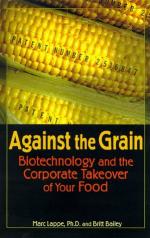|
This section contains 1,665 words (approx. 6 pages at 300 words per page) |

|
Overview
James Watson (1928- ) and Francis Crick's (1916- ) publication on April 25, 1953, of the double helix model for deoxyribonucleic acid (DNA) propelled the biological sciences and biotechnology, the use of microorganisms to produce specific chemical compounds, into the modern age. Today, biotechnology and molecular biological techniques, once strictly confined to the realm of geneticists and molecular biologists, are finding applications in fields ranging from medicine to species conservation.
Background
Microorganisms, such as yeast, have enhanced the quality of human life for thousands of years. Primitive civilizations used simple forms of biotechnology as they fermented juices to produce alcoholic beverages. By the mid-1700s, microorganisms had been incorporated into cheese, bread, and beverage production. In the 1920s, Alexander Fleming (1881-1955) serendipitously discovered that a mold produced the chemical substance penicillin, which became the first antibiotic used to fight infection. During the next 25 years, as...
|
This section contains 1,665 words (approx. 6 pages at 300 words per page) |

|


